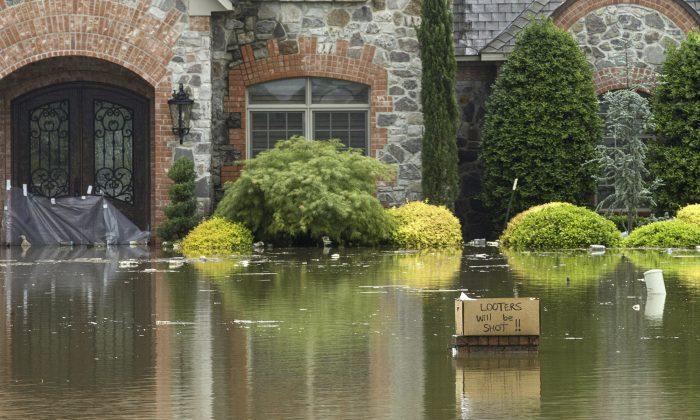The Arkansas River held steady at record levels on May 30, putting enormous pressure on aging levees and offering little relief to areas enduring historic flooding.
Just across the border in Oklahoma’s Muskogee County, the conditions have already prompted the evacuations of more than 2,400 people and flooded nearly 1,100 homes, according to the local emergency management department.
Arkansas officials kept a watchful eye on a weakened levee in rural Crawford County on the western edge of the state. Sheriff Ron Brown said an 80-foot-wide section of the levee slid down on May 28, but workers were able to reinforce it to prevent the levee from being breached.
Brown said the levee was still at risk of failing. If that happens, about 250 people and 150 structures would be at risk.
All other levees in Arkansas were in good shape as the river level remained at a historic crest on May 30, according to Col. Bob Dixon of the U.S. Army Corps of Engineers. But he said local levee boards should have a plan in place in case a levee fails, because the flooding is expected to persist for days if not weeks.
“My concern is, they are designed for a temporary load and they are holding a lot more water than they have been tested on before,” Dixon said.
Meanwhile, portions of the raging river showed signs of receding upstream in northeastern Oklahoma as the U.S. Army Corps of Engineers scaled back releases from a hydroelectric dam near Tulsa, about 104 miles (167 kilometers) northeast of Fort Smith.
Powerful storms that dropped more than 20 inches of rain on parts of the region over the past month have overwhelmed the Keystone Lake reservoir, which drains a watershed of about 22,000 square miles in Oklahoma and Kansas.
Lt. Col. Adam Weece said releases from the dam into the swollen river have fallen from a high of 275,000 cubic feet per second on May 29 to 240,000 cubic feet per second.
“We’ve been stepping down the release overnight. It’s a gradual process,” Weece said, noting that the Corps plans to reduce flow to 100,000 cubic feet per second by June 4.
The river’s level in Tulsa crested on May 29 and had fallen by almost 2 feet by May 30, according to the National Weather Service.
Arkansas Gov. Asa Hutchinson said on May 30 that more than 400 homes have been voluntarily evacuated because of the flooding. The Republican said he directed another $250,000 in state funds toward the flood response and requested federal assistance from the Trump administration.
At least one death in Arkansas has been blamed on the flooding. In Illinois, Gov. J.B. Pritzker activated the National Guard to respond to recent severe flooding there.





